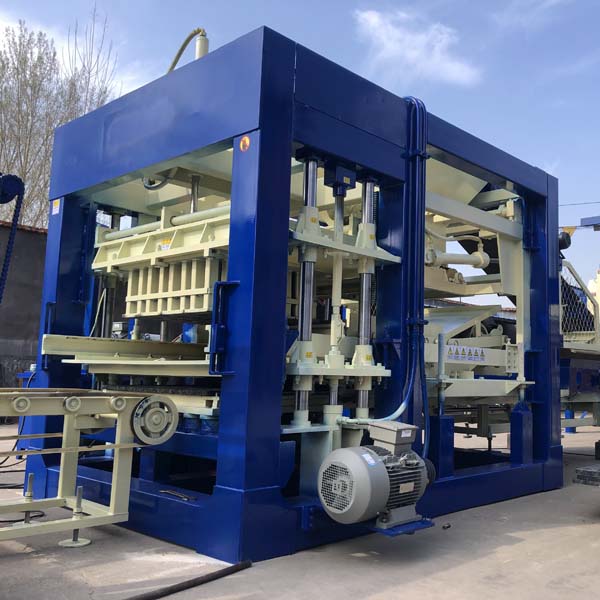
The world of construction is undergoing a transformative journey, driven by technological innovations that are reshaping the way buildings are designed, constructed, and inhabited.
Among these innovations, one standout is the state-of-the-art brick manufacturing automation.
This groundbreaking technology represents a pivotal shift in the production of one of the oldest and most fundamental building materials – bricks.
In this essay, we will explore the intricacies of this innovation, its impact on construction practices, the advantages it brings, and the potential challenges that lie ahead.
The Evolution of Brick Manufacturing
Bricks have been a cornerstone of construction for millennia, with their use dating back to ancient civilizations.
Traditionally, brick production was a labor-intensive process, involving manual labor for material mixing, molding, drying, and firing.
However, with the advent of automation, the brick manufacturing landscape is undergoing a profound transformation.
The Essence of State-of-the-Art Brick Manufacturing Automation
State-of-the-art brick manufacturing automation encapsulates a synergy of cutting-edge technologies, including robotics, artificial intelligence, and digital control systems.
This sophisticated blend of innovations streamlines and revolutionizes the brick production process, resulting in enhanced efficiency, quality, and sustainability.
The Automated Brick Production Process
At the heart of state-of-the-art brick manufacturing automation lies an intricate and seamlessly orchestrated production process.
This process encompasses several stages:
Raw Material Preparation: Raw materials, typically clay, sand, and binding agents, are precisely measured and mixed to create a consistent and homogeneous mixture.
The automation ensures accurate proportions, eliminating the inconsistencies that can arise from manual mixing.
Molding and Shaping: The mixed materials are fed into automated molds, where hydraulic or pneumatic systems exert controlled pressure to shape the bricks.
This phase guarantees uniformity in size, shape, and density.
Drying Chambers: The molded bricks are transferred to automated drying chambers.
These chambers employ carefully regulated heat and airflow to facilitate efficient drying, reducing the risk of cracks or structural weaknesses.
Firing Kilns: In the final phase, the dried bricks are fired in kilns, reaching temperatures that enhance their strength and durability.
Automation optimizes the firing process, ensuring consistent results across all bricks.
Advantages and Transformative Impacts
The adoption of state-of-the-art brick manufacturing automation ushers in a multitude of advantages that extend far beyond traditional brick-making methods.
Precision and Consistency: Automation eliminates human errors, resulting in bricks that are uniform in size, shape, and quality.
This precision enhances the structural integrity and aesthetics of constructed buildings.
Efficiency and Speed: Automated brick production significantly reduces the time required for manufacturing.
This accelerated pace expedites construction projects, potentially reducing overall project timelines.
Labor Efficiency: The reduced reliance on manual labor translates to cost savings and the ability to allocate human resources to more intricate and skilled tasks within construction projects.
Sustainability: Automation optimizes the use of raw materials and reduces waste, aligning with the construction industry’s growing emphasis on sustainable practices.
Architectural Freedom: Uniform brick quality allows architects to explore innovative designs that rely on consistent and precise brickwork, enabling the creation of striking and unique structures.
Navigating Challenges and Considerations
While the benefits of state-of-the-art brick manufacturing automation are substantial, it is crucial to acknowledge the challenges and considerations that accompany its implementation.
Initial Investment: Acquiring and installing automated machinery requires a significant upfront investment, potentially posing financial barriers for smaller construction firms.
Skill Transition: The integration of automation demands a skilled workforce capable of operating, maintaining, and troubleshooting advanced machinery.
Workflow Integration: Adapting existing construction workflows to incorporate automation may necessitate changes to operational processes and project management.
Energy Consumption: While automation can reduce material waste, the energy consumption associated with machinery operation and kiln firing must be managed for a net positive environmental impact.
Shaping the Future of Construction
The advent of state-of-the-art brick manufacturing automation is a testament to the evolution of construction practices.
Its impact extends beyond the realm of brick production, influencing the broader construction industry.
Redefining Construction Speed: Automated brick production accelerates project timelines, contributing to the completion of construction projects at a faster pace.
Architectural Innovation: Architects are empowered to explore creative and intricate designs, knowing that the consistent quality of automated bricks will translate their visions into reality.
Labor Dynamics: The integration of automation necessitates a skilled and adaptable workforce, potentially reshaping labor dynamics within the construction industry.
Sustainable Building Practices: The optimization of raw material usage and reduction of waste align with the global movement toward environmentally conscious construction practices.
The advent of state-of-the-art brick manufacturing automation marks a transformative phase in the construction industry’s evolution.
By harnessing the power of automation, brick production is elevated to new heights of precision, efficiency, and sustainability.
While challenges such as initial investment and skill transition must be addressed, the advantages – including enhanced precision, architectural freedom, and sustainability – underscore the profound impact of this innovation.
As construction practices continue to evolve, it is evident that state-of-the-art brick manufacturing automation is steering the industry toward a future characterized by efficiency, creativity, and responsible resource utilization.
